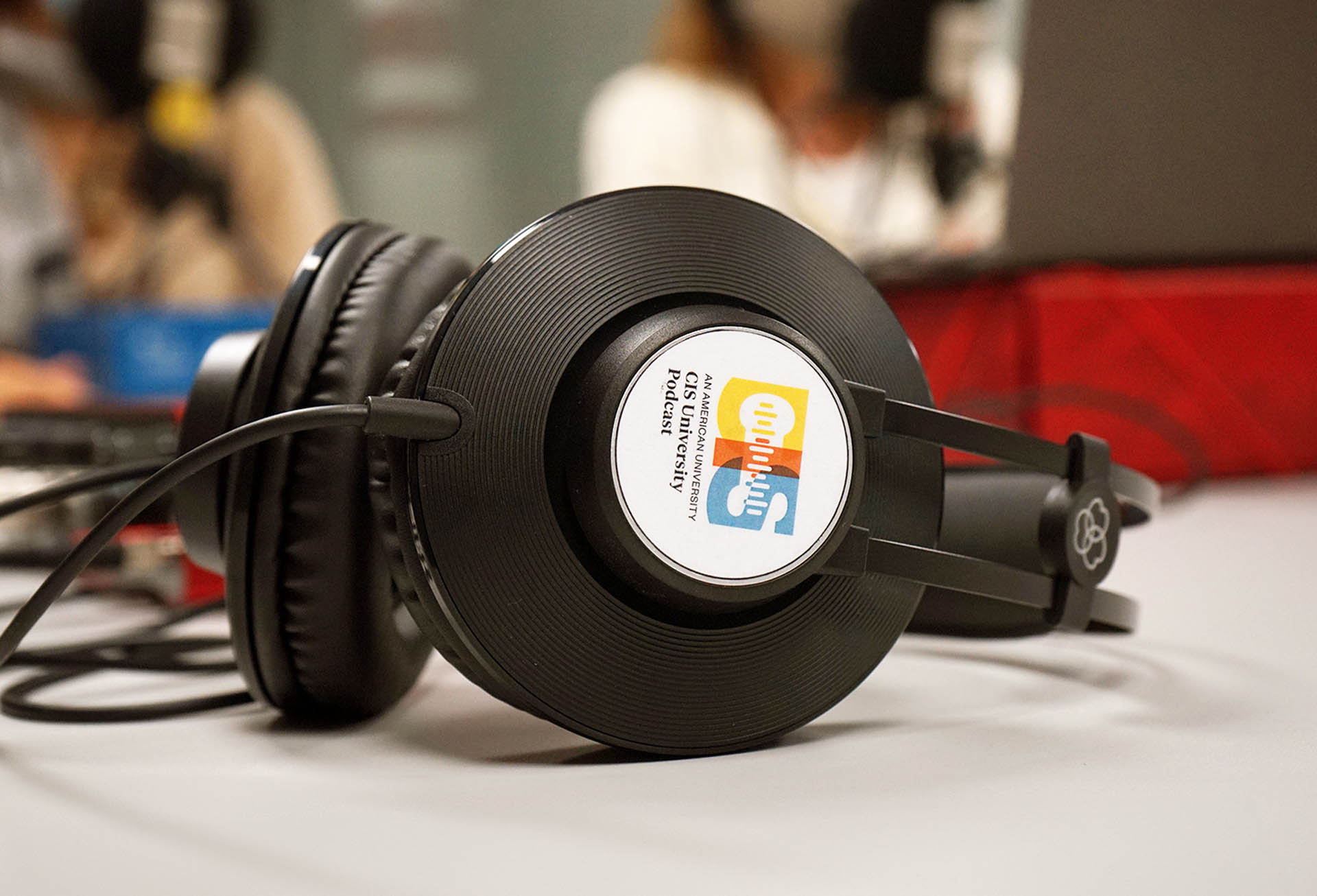By Jaime Navarro
Gabriel Ferrer is a professor at CIS University, as well as the coordinator and producer of the university’s podcast. He considers himself passionate about education in the area of communication studies. In this interview, Ferrer shares his motivation behind creating the university’s podcast, the challenges he faced, and his hopes for the future.
What inspired you to help create a podcast for the university?
I have always been very interested in radio, and before I was a professor at this university, a friend of mine named Roberto Martínez, who is the creator of the podcast Bienvenido a los 90, the most recognized podcast about the music industry of the 90s, contacted me. Basically, he asked me if I could make him some visuals and design the image of his podcast. One day, I told this story to a colleague at the university, and he told me that they had been thinking about doing it for some time, but they lacked someone who had the background and “expertise” to start it.
Can you tell us about the main topics that you cover in the podcast?
The podcast is called Conversations for a Better World. The President and main host, María Díaz de la Cebosa, chose that name. I always have in mind the fact that this is a humanist university when selecting the topics. The people I bring to the podcast are those who are trying to create a better world: entrepreneurs, businessmen, artists, etc. We always avoid talking about our university careers or our personal goals. Instead, María asks them questions like: “How can we improve the world today?” Each guest shares his or her opinion from his or her own perspective, and that enriches the conversation.
How do you think podcasting benefits the university community, both students and faculty?
There are so many answers to that question! One of the things we have done is to invite brilliant, intelligent people who genuinely connect with others. This approach has a sort of ‘snowball effect,’ in the sense that you launch something not knowing exactly where it will lead. For instance, we had Tito Customs, an entrepreneur who customizes shoes for Hollywood celebrities.
We also invited the head of Ecoalf, a sustainable fashion brand committed to environmentally friendly clothing, to join us on the podcast. Through these conversations and connections, we’re hoping to build something that makes a lasting impact.
What challenges did you face when starting the podcast, and how did you overcome them?
For me, the most important thing about creating a podcast or really any entrepreneurial endeavor is consistency. It doesn’t mean much if, in one month, you have a lot of videos and the podcast starts gaining more listeners, but then you don’t keep creating and giving 100% the following month. This is something I have learned from my friend Roberto Martínez. He’s already reached his 1,000th episode on his own podcast. His dedication and consistency are inspiring.
Could you share an interesting anecdote or memorable moment that happened during one of your podcast episodes?
The host, María Díaz de la Cebosa, reached out to a well-known priest named Padre Ángel, and we did an interview with him in the largest cathedral ever built by a single person. It was constructed by a man named Justo Gallego, a man who decided 60 years ago to build this cathedral all by himself. The interview focused on Padre Ángel talking about Justo Gallego and his incredible journey in building the cathedral. I remember it was a bitterly cold winter day, and when we finished recording, we took some photos together outside the cathedral. It turned out that Justo Gallego, the man who built the cathedral, passed away just two weeks after our interview. It really struck me because we ended up being the last ones to capture an interview with Padre Ángel speaking about Justo, who passed away at the age of 94.
How do you see the role of podcasts in the future of education and communication at the university?
It is something inevitable, really. The university has already set up a radio studio,
and we are already brainstorming a name for it. It is only a matter of time before all universities have their own podcasts, not just to build a sense of community, but also as an educational tool.
Who is your target audience, and how do you engage them with your content?
We actually have two main target audiences. One of them is the parents of the students who attend our university, and the other primary audience is young people from all around the world. Because of this, we’ve had to adjust our topics a bit, focusing on helping them understand the professional world and how to approach entrepreneurship.
What advice would you give to someone who wants to start their own podcast?
I always say, “The best painters are the ones who go to the Prado Museum and study the art of other artists.” If you want to create a podcast, the most important thing is to listen to a lot of podcasts and learn from them. It is about finding the right focus for your own podcast. We need to open our eyes and ears, paying attention to what others are doing, so we can learn and improve.
